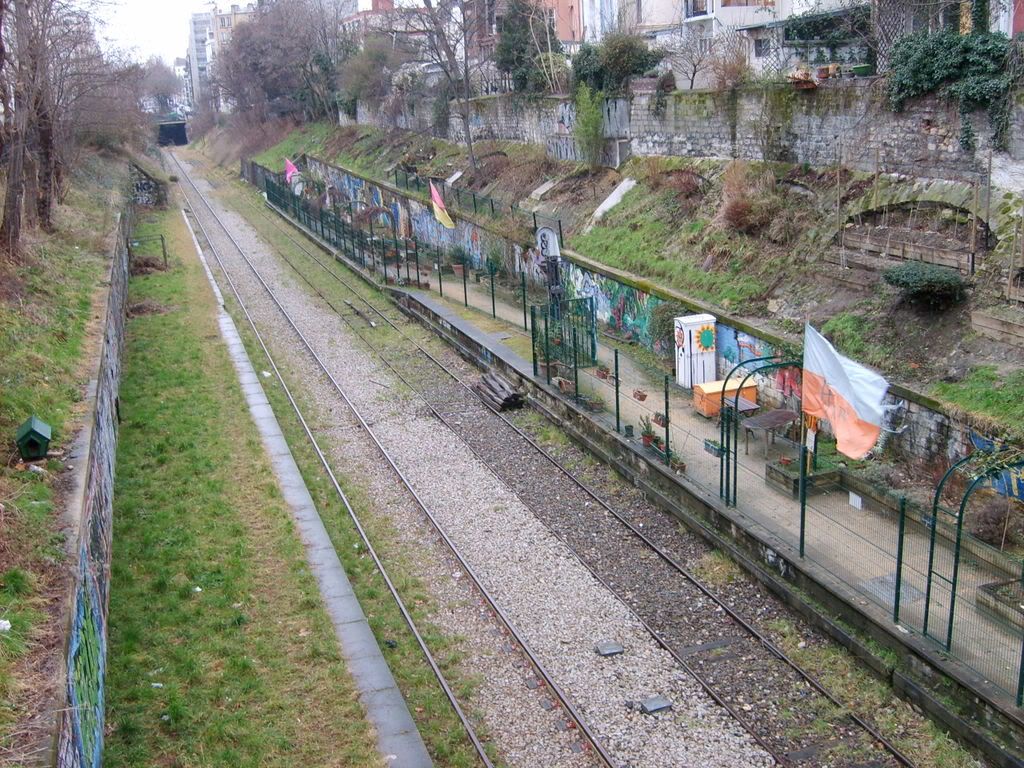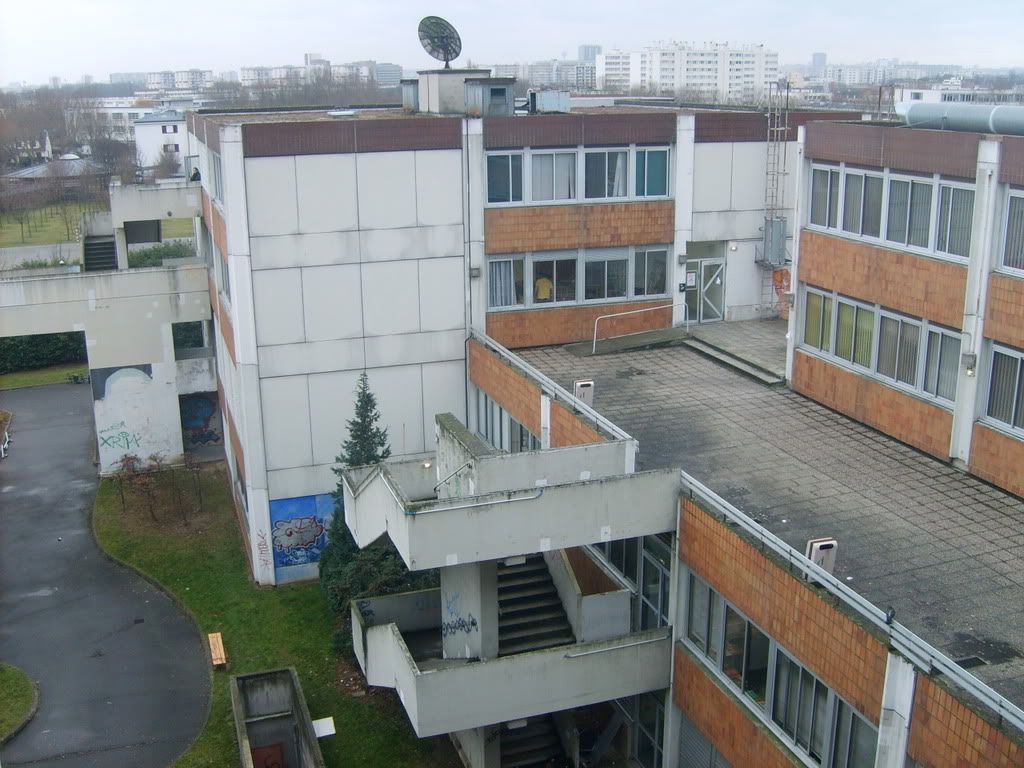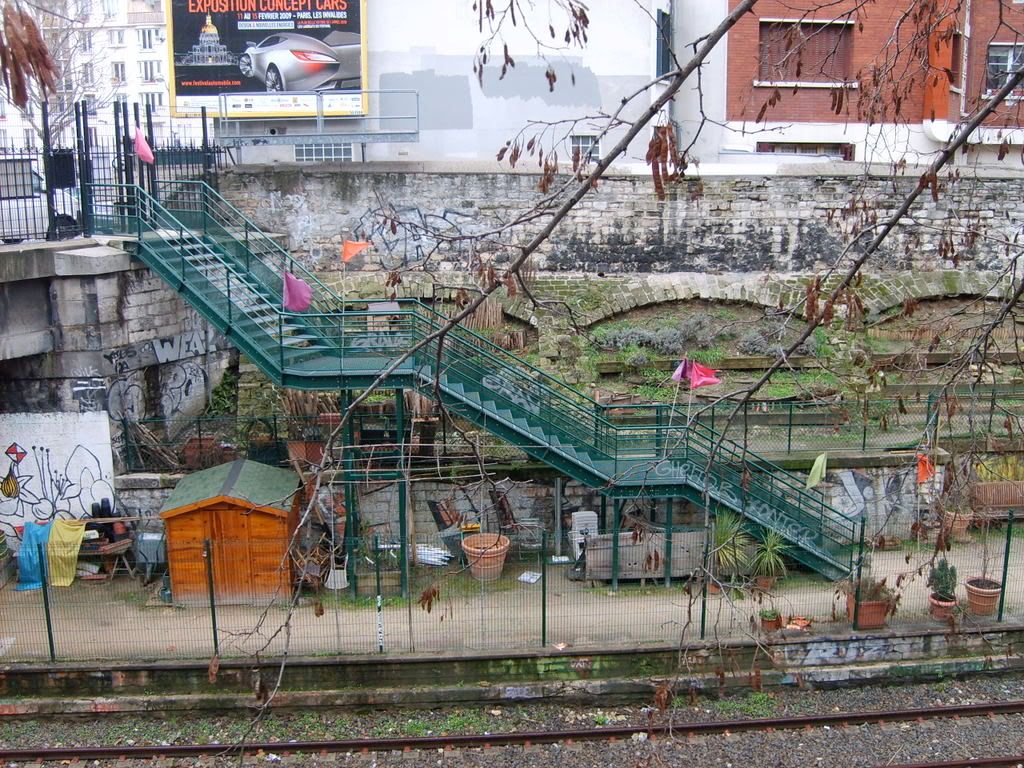Real classes and prof on 1/2-strike
This week, after all of last week’s intro stuff, real classes are starting at Paris 8. Well, all right, I’ve had about 1.5 real classes. Actually, 1 real class, because they were both about 1/2 classes. Except one of them was half of a double-length class. So yeah, 1.5 classes.
Yesterday was my first real class of Comprehension and Analysis of Texts. The professor announced her intention (which she’d mentioned last week as a possibility) of going on 1/2-strike. The class is from 9h00 to 12h00; she’ll be starting class at 9h30 and ending it about 11h00. So it’s just as long as a regular Hunter class, but only once a week. I had my first class of the “Discovering Paris” course today. The professor was a half-hour late, but that’s not as big a deal as it could be, since the class lasts 6 hours (12h00-18h00).
Wow, I just realized I’ve been writing all the times in French. What I mean is I have class Tuesdays 9:30-11:00, and Wednesdays from 12:00-6:00.
Anyway, the Discovering Paris class comes highly recommended (I first heard about it because the MICEFA has a highly recommended class that involves walking tours of Paris; when some of us inquired about that, we were told that we should do the one at Paris 8 so long as we were there, since the MICEFA one is based on the Pars 8 one). Today was logistics, introductions, course description, forming groups, etc.
As for actual class content, the only real real class I’ve had is the analysis-of-texts one. We spent a lot of Tuesday learning the acceptable ways of approaching questions and structuring academic documents in French, with a lot of attention paid to the things said implicitly rather than explicitly (the pragmatics of the language, to use linguist-speak). The professor had us play Spot-the-Presuppositions with sentences, e.g. “He put on his coat and went outside,” which presupposes that A) he was not wearing his coat before he put it on and B) he was indoors before he went outside (and also C) that he has a coat, thus D) that the coat is a coat, thus E) that coats are a thing which can exist, thus F) that existence exists, similarly G) that he exists and H) that indoors and outdoors exist and I) there is a quality of ownership that can be used to distinguish his coat from other coats by virtue of the fact that it belongs to him… and so on, but I gather these weren’t important, since the professor didn’t mention them).
At any rate, it seems that the French academic establishment considers it bad form to attack underlying assumptions made by a statement or question you’re asked to respond to. Thus, if someone asserts “The main reason children don’t read nowadays is the influence of television,” you are can talk about the impact of television, and about the other causes that are implied to have an effect on children’s reading habits; but you can’t say that, actually, children nowadays love to read and whoever wrote the original statement ought to be committed to the Quincy Magoo Memorial Home for the Terminally Unobservant.
This restriction, I think, is a shame. I’m all for using artificial limits in exercises and practice situations; it’s a great way to learn to work creatively around obstacles. But in any real-life situation, if one has to react to a statement, it’s often very useful to simply attack whatever assumptions support the statement. If you can knock away the foundation, or force it to be modified or qualified, you’ll have a much easier time dealing with the ensuing conclusions.
Because this is such an effective tactic, of course, it can become a crutch; again, I think it’s a good idea to practice different ways of approaching things. But to put this off-limits entirely? That means that whoever asks the question has total control over the rules of engagement. It’s like asking a defendant “What were you doing on the night the victim died when you killed him?” The American approach to these things is a bit like a game of pool; the teacher gets the first move, and the student has to deal with whichever balls are left on the table, wherever they are–but there are options. The French approach is also like a game of pool, except the student is the cue ball.
All in all, this makes me happy that I’ve only got to deal with one semester of writing French papers in French for French people. I also ate at the St-Denis cafeteria for the first time today. I’d only ever been to the little sandwich place in Bâtiment A; the cafeteria proper is nice and big and serves decent institutional food at low prices (€3,83 for a big plate of food, two sides, and a drink). Oh, and more pictures:

Tracks near the dorms. Lookit pretty park thingy on the side!



